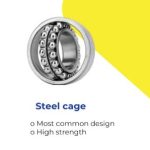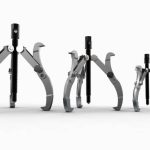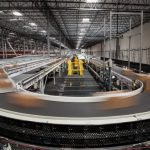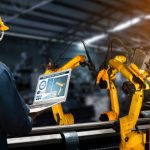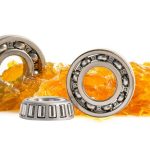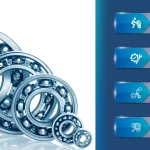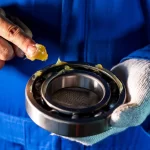Electric vehicles (EVs) represent a paradigm shift in the automotive industry, offering sustainable and efficient alternatives to traditional internal combustion engine vehicles. At the heart of every EV lies a complex system of components, including bearings, that play a crucial role in ensuring optimal performance and efficiency. Bearings in EVs are integral components that support various functions within the vehicle architecture, ranging from motor components to drivetrain systems and wheel assemblies.
Importance of Bearings in Electric Vehicles
The importance of bearings in electric vehicles (EVs) cannot be overstated, as they play a critical role in ensuring the smooth and efficient operation of various vehicle components. Here’s why bearings are essential in EVs and their role in vehicle architecture:
- Supporting Motor Components: Bearings are crucial for supporting the rotating components of electric motors, including the rotor and shaft. They enable smooth rotation of these components, allowing the motor to convert electrical energy into mechanical power efficiently. Without bearings, the motor’s performance would be compromised, leading to increased friction, heat generation, and energy loss.
- Facilitating Power Transmission: In EVs, bearings are also integral to the drivetrain system, which transmits power from the motor to the wheels. Bearings support the shafts and gears within the drivetrain, ensuring that power is transferred smoothly and efficiently. By reducing friction and minimising mechanical losses, bearings help optimise the drivetrain’s efficiency and overall vehicle performance.
- Enabling Wheel Assemblies and Suspension Systems: Bearings play a crucial role in the wheel assemblies and suspension systems of EVs. They support the weight of the vehicle and facilitate the smooth rotation of the wheels, allowing for efficient movement and precise steering. Additionally, bearings in suspension systems help absorb shocks and vibrations from the road, ensuring a comfortable ride for occupants.
- Enhancing Vehicle Dynamics: By reducing friction and enabling smooth movement of components, bearings contribute to the overall dynamics and handling of electric vehicles. Well-designed bearings can improve stability, agility, and responsiveness, enhancing the driving experience and safety of EVs.
- Impact on Performance and Efficiency: The efficiency and performance of an EV heavily relies on the quality and functionality of its bearings. Well-designed and properly integrated bearings contribute to reduced friction, improved power transfer, and enhanced overall vehicle dynamics, resulting in greater efficiency and range.
Impact of Bearing Technology on electric vehicle (EV) performance and efficiency
There is a significant contribution to various aspects of vehicle operation and overall driving experience. Here’s how bearing technology influences EV performance and efficiency:
- Reduced Friction and Energy Losses: Advanced bearing technologies, such as low-friction coatings, optimised designs, and high-quality materials, help minimise friction between moving components in electric motors, drivetrains, and wheel assemblies. By reducing frictional losses, these bearings improve energy efficiency and extend the range of electric vehicles, allowing them to travel farther on a single charge.
- Enhanced Durability and Reliability: Bearings engineered with durable materials and innovative designs can withstand the rigours of electric vehicle operation, including high speeds, heavy loads, and demanding driving conditions. Improved durability ensures long-term reliability and minimises the need for maintenance and replacement, contributing to lower ownership costs and enhanced vehicle uptime.
- Optimised Performance: By supporting critical components like electric motors, drivetrain systems, and wheel assemblies, bearings play a crucial role in optimising the performance of electric vehicles. Well-designed bearings enable smooth and precise operation, enhancing acceleration, braking, and handling characteristics. Additionally, bearings with high load-carrying capacity and stiffness contribute to improved vehicle dynamics and overall driving dynamics.
- Integration with Electric Powertrains: Bearing technology is evolving to meet the specific requirements of electric powertrains, including higher operating speeds, increased torque levels, and unique thermal management challenges. Bearings designed for electric vehicle applications feature specialised coatings, seals, and lubricants to ensure optimal performance and reliability in electrified drivetrains.
- Noise and Vibration Reduction: Advanced bearing designs incorporate features to minimise noise and vibration levels in electric vehicles, enhancing occupant comfort and driving experience. By reducing unwanted noise and vibrations generated by rotating components, such as electric motors and wheel assemblies, these bearings contribute to a quieter and more refined driving environment.
Types of Bearings Used in EVs
In the realm of electric vehicles, various types of bearings are utilised to meet specific application requirements. These include:
| Bearing Type | Advantages | Considerations |
| Ball Bearings Commonly used in electric motors, ball bearings offer low friction and high-speed capabilities, making them ideal for applications requiring smooth rotation and minimal energy loss. | – Low friction and smooth operation | – Limited load-carrying capacity |
| – High-speed capability | – Prone to skidding under heavy loads | |
| – Compact and lightweight design | – Susceptible to damage from misalignment | |
| Roller Bearings Roller bearings, such as cylindrical and tapered roller bearings, find application in drivetrain systems and wheel assemblies, providing robust support for heavy loads and dynamic conditions. | – Higher load-carrying capacity compared to ball bearings | – Higher friction compared to ball bearings |
| – Enhanced stability and rigidity | – Greater space requirement due to larger size | |
| – Resistant to misalignment | – Increased weight may impact vehicle efficiency | |
| Ceramic bearings Known for their superior hardness and corrosion resistance, are gaining popularity in EVs for their ability to withstand high temperatures and harsh operating environments, particularly in motor components. | – Excellent corrosion resistance | – Higher cost compared to steel bearings |
| – Lower friction and reduced heat generation | – Brittle nature may lead to potential breakage | |
| – Lighter weight than steel bearings | – Special handling and installation requirements |
Bearing Integration in EV Motor and Drivetrain
Within electric motors and drivetrain systems, bearings play specific roles in ensuring optimal performance and reliability. For example:
- Electric Motor: Bearings support the rotor and shaft within electric motors, enabling smooth rotation and efficient power delivery. They also help minimise vibration and noise, contributing to a quieter and more comfortable driving experience.
- Drivetrain Systems: Bearings in drivetrain systems, such as gearboxes and differential units, facilitate power transmission from the motor to the wheels. They withstand high loads and varying torque levels, ensuring reliable operation under diverse driving conditions.
Bearings in Wheel Assemblies and Suspension Systems
In electric vehicles (EVs), bearings play a crucial role in both wheel assemblies and suspension systems, contributing to the overall performance, comfort, and safety of the vehicle.
Wheel Assemblies:
- Support and Rotation: Bearings in wheel assemblies enable smooth rotation of the wheels while supporting the weight of the vehicle. This allows for efficient transfer of power from the drivetrain to the wheels, ensuring optimal traction and performance.
- Load Distribution: Bearings distribute the load evenly across the wheel assembly, helping to minimise friction and wear. This is particularly important in electric vehicles, where efficient energy transfer is essential for maximising range and battery life.
- Reduced Friction: By reducing friction between the wheel hub and the axle, bearings contribute to improved fuel efficiency and range in electric vehicles. This is especially crucial in EVs, where minimising energy losses is a key priority.
Suspension Systems:
- Shock Absorption: Bearings in suspension systems help absorb shocks and vibrations from the road surface, providing a smoother and more comfortable ride for passengers. This is essential for enhancing the overall driving experience and reducing driver fatigue.
- Dynamic Stability: Bearings contribute to the dynamic stability of the vehicle by allowing controlled movement of suspension components. This helps to maintain optimal tire contact with the road surface, improving traction and handling, especially during cornering and manoeuvring.
- Noise Reduction: Properly functioning bearings in suspension systems help reduce noise and vibrations transmitted to the vehicle’s cabin, resulting in a quieter and more enjoyable driving experience. This is particularly important in electric vehicles, which are known for their quiet operation.
Therefore, in wheel assemblies and suspension systems, bearings enable smooth and controlled movement, enhancing vehicle stability and ride comfort. They support the weight of the vehicle, absorb road shocks, and allow for precise steering and handling.
In conclusion, bearings are integral components in electric vehicles, contributing to their performance, efficiency, and overall driving experience. By understanding the technology, integration, and performance of bearings in EVs, engineers and industry experts can continue to innovate and optimise electric mobility for the future.
FAQ's
What bearings are used in EV?
Electric vehicles utilise various types of bearings, including ball bearings, roller bearings, and ceramic bearings, depending on the specific application requirements.
What bearings are used in electric motors?
In electric motors, ball bearings and roller bearings are commonly used to support the rotor and shaft, enabling smooth rotation and efficient power delivery.
Which bearings are used in vehicles?
Vehicles, including electric vehicles, use a combination of ball bearings, roller bearings, and specialty bearings, depending on the specific components and systems within the vehicle.
Do electric cars have wheel bearings?
Yes, electric cars are equipped with wheel bearings, which play a crucial role in supporting the weight of the vehicle, facilitating smooth rotation of the wheels, and ensuring proper alignment and suspension performance.




